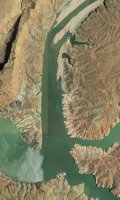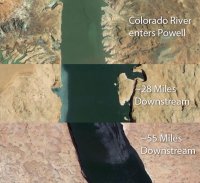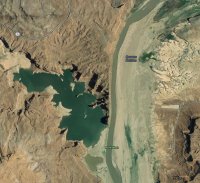- Joined
- Jan 4, 2015
- Messages
- 2,836
Hmmm interesting. I would have guessed you'd find huge deposits of sediment in the deeper areas, as there was more water on top of for he silt to settle on. You're saying the muddy water had already deposited its sediment load before it reached deeper areas of the lake?Much more silt accumulates in the shallows at the backs of canyons and where the rivers come in than in the lower/deeper parts. Too bad it isn't the other way around, the dam would already be inundated.




